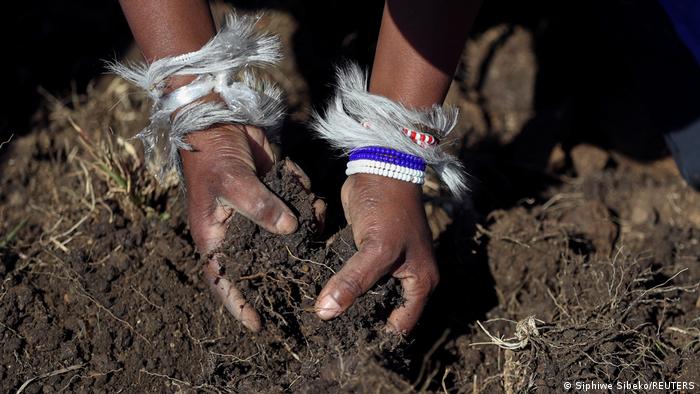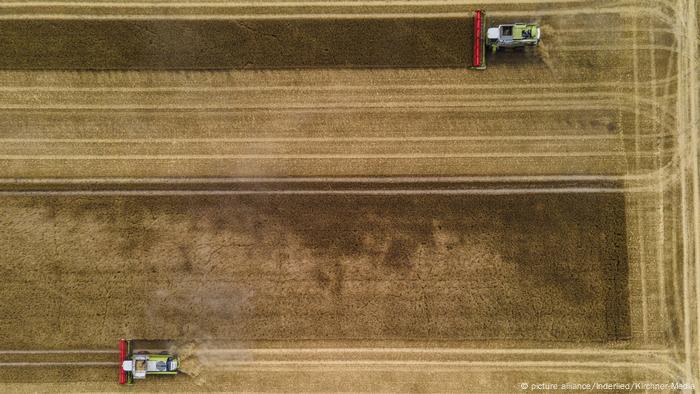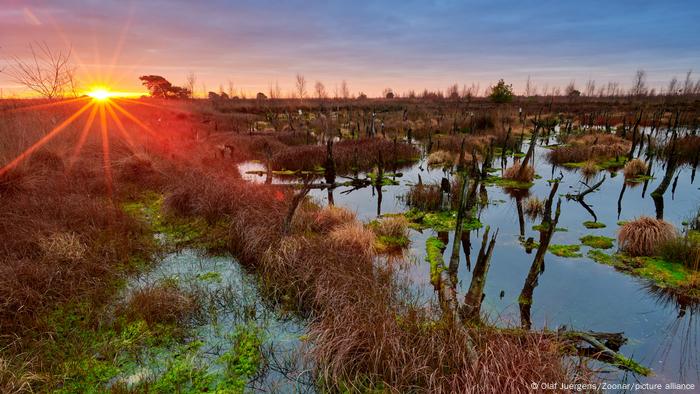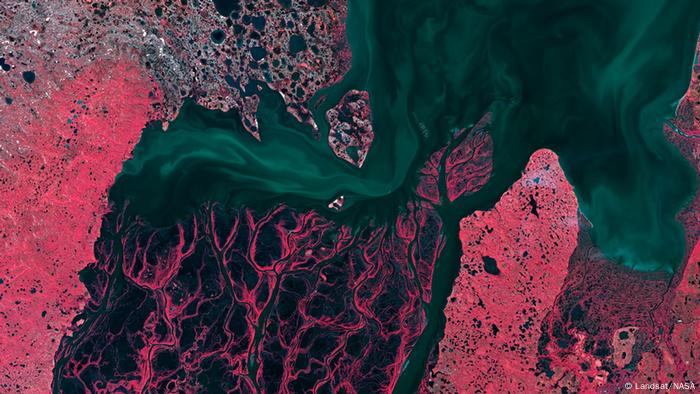Soil — dull and dirty? Think again …
To mark World Soil Day, we’re taking a look at the humble resource beneath our feet that nourishes entire ecosystems and keeps the world fed.

Soil: Time to take a closer look
"A nation that destroys its soil, destroys itself." Such were the words of Franklin D. Roosevelt back in 1937 when the United States was in the midst of its dust bowl years. Overplowing and the displacement of prairie grasslands that anchored the topsoil had reduced once-fertile plains to a parched, barren wasteland swept by dust storms.
We still use the word "dirt" to mean soil. But there is a world of difference between the rich, fertile earth that nourishes ecosystems and the desiccated ground that gave the US depression — compounded by crop failures — the nickname the "dirty thirties."
A teeming microcosm of biodiversity
Soils are the living, breathing surface of our planet. A mix of mineral and organic matter, they are among the most species-rich habitats in the world, teeming with worms, insects, bacteria and fungi. A square meter of soil can contain up to 10,000 different species, and a single gram can be home to a billion bacteria.

The humble earthworm: making our soils rich and fertile
These organisms decompose leaf litter, dead plants and animals, recycling precious nutrients back into the soil to feed new generations of plants.
Earthworms, ants and other creepy crawlies further enrich the soil as they burrow, mixing the rich debris of the topsoil into the layers below. At the same time, they help give soil its structure, ensuring it's well aerated and can absorb and drain water.
Intensive agriculture drains soils of life
Only a fraction of the organisms living in our ground have been properly studied. But what scientists do know is that our soils are in bad shape and their biodiversity is fast declining.
Over 50% of the world's arable land is devoted exclusively to rice, maize, soy and wheat. Planting huge expanses of a single crop can boost yield — at least in the short term — and makes mechanized harvesting easier.
But as the same crop draws the nutrients it needs from the soil year after year, that soil becomes depleted. This means that farmers have to rely on artificial fertilizers, which pollute water sources and disrupt the natural balance of ecosystems. Synthetic pesticides and fertilizers also kill off vital microbes in the soil.

Industrial argriculture boosts yield in the short term, but saps the soil of nutrients
Plowing takes a toll, too. It destroys natural networks of fungi and microorganisms while breaking up the resilient structure of soil, leaving it more prone to flooding and drought, and vulnerable to erosion.
In 2015, a study from England's University of Sheffield found that 33% of the world's arable land had been lost to pollution and erosion over the previous 40 years. "This is catastrophic when you think that it takes about 500 years to form 2.5 cm (1 inch) of topsoil," the authors of the study said.
Brazil, as well as some countries in the Caribbean, Central Africa and Southeast Asia, have lost 70% of their agricultural land to erosion, and around the world an estimated 3.2 billion people — particularly rural communities in the Global South — are already suffering from failing or reduced harvests as a result of land degradation.
Fertilizers are also problematic because they require a lot of energy to produce. More than 40% of the carbon footprint of an ordinary loaf of bread is down to the fertilizer used to grow the grain it's made from.
Carbon sinks at risk
While artificially enriching depleted soils means more emissions from fertilizers, healthy soils actually sequester greenhouse gases, helping protect us against climate change.
Not all emissions from human activities end up in the atmosphere. They are absorbed by plants, forests and the oceans. When plants die and decompose, much of the carbon they have captured from the atmosphere is absorbed by the soil. This process takes time, but cumulatively, it makes soils a major carbon sink — sequestering twice as much CO2 as all the world's flora and our atmosphere combined.

For the sake of our climate, scientists say we have to preserve and restore the world's wetlands
The most carbon-rich soils of all are found in wetlands, where plant debris sinks into shallow, acidic water. In this oxygen-poor environment, the plant matter doesn't decompose and instead turns into carbon-storing peat.
Peatlands make up just 3% of land on our planet, but account for about a third of the total CO2 stored in soils.
That is all well and good as long as the carbon remains locked in, but it becomes dangerous if we let it out — which is why land-use change is a major contributor to greenhouse gas emissions. Plowing up soils or draining wetlands for agriculture or construction releases the stored carbon into the atmosphere, heating up the planet. This is also true of permafrost soils in Antarctica and Canada, which are melting as temperatures rise.

Siberia is laced with carbon-storing wetlands
Authors of a 2019 study published in the journal Nature say that without large-scale restoration of these habitats, up to 40% of the greenhouse gas budget still available to meet the Paris climate change targets could be used up by these areas alone.
Traditional farming practices used in subsistence agriculture and some organic farming, could also contribute to recovery of our soils — or at least slow their decline. Rotating crops, mixing different plant species together, sowing without tilling and allowing crop waste to decay where it's grown all help keep soils healthy.
These practices are more labor-intensive and less profitable in the short term. But according to the International Union for Conservation of Nature, increasing soil biodiversity could yield up to 2.3 billion metric tons (25.4 US tons) of additional crop yields per year, worth $1.4 trillion (€1.24 trillion).
Translated from German by Ruby Russell
No comments:
Post a Comment